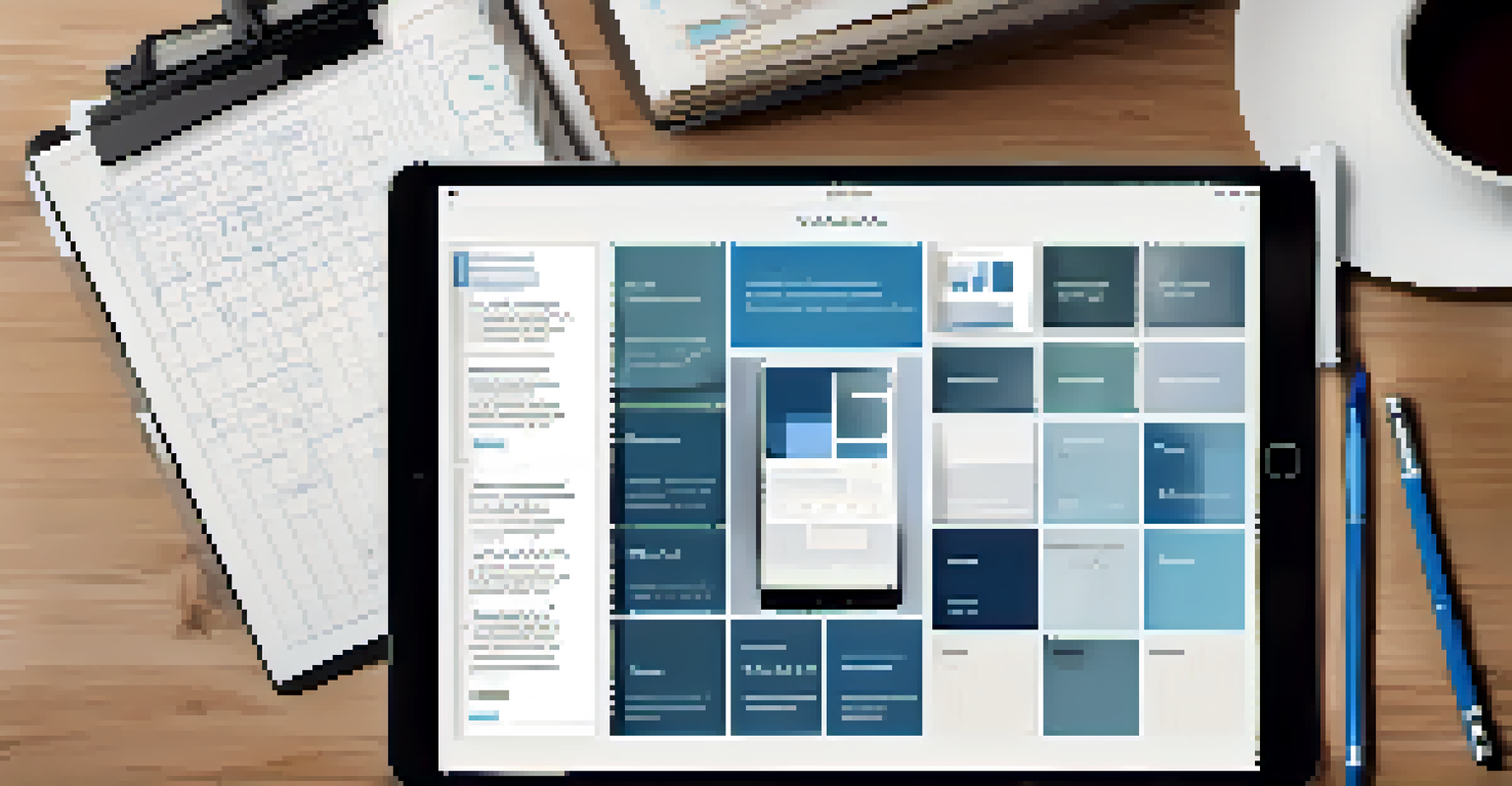Understanding Digital Portfolios: A Comprehensive Guide

What is a Digital Portfolio and Why Do You Need One?
A digital portfolio is a curated collection of your work showcased online. Think of it as your personal brand's gallery, where employers or clients can see your skills and accomplishments. In today's digital world, having a digital portfolio is essential for standing out in the competitive job market.
Your portfolio is a reflection of you, so choose works that you are proud of.
Digital portfolios allow you to present your skills in a visually appealing way. Instead of simply listing qualifications on a resume, you can include samples of your work, projects, and achievements. This interactive format engages viewers and gives them a deeper understanding of your capabilities.
Moreover, a digital portfolio can evolve over time. As you gain new skills and experiences, you can easily update and refine your portfolio, ensuring it always reflects your current expertise. This adaptability makes it a valuable tool for career growth.
Key Elements of an Effective Digital Portfolio
An effective digital portfolio typically includes several key elements: an 'About Me' section, work samples, testimonials, and your resume. The 'About Me' section introduces you and highlights your unique strengths. It’s your chance to tell your story and connect with viewers on a personal level.

Work samples are the heart of your portfolio. They should showcase your best projects and demonstrate your skills in action. Including a variety of formats, such as images, videos, and written pieces, can make your portfolio more engaging and informative.
Digital Portfolios Showcase Skills
A digital portfolio acts as an online gallery of your work, allowing potential employers to see your abilities and accomplishments.
Testimonials from colleagues or clients can add credibility to your portfolio. These endorsements serve as social proof, affirming your skills and work ethic. Including a well-rounded mix of elements will provide a comprehensive view of your professional identity.
Choosing the Right Platform for Your Digital Portfolio
Selecting the right platform for your digital portfolio is crucial. There are numerous options available, each with its own features and benefits. Popular platforms include WordPress, Wix, and Squarespace, each offering customizable templates to suit your style.
An online portfolio is the perfect way to showcase your skills and demonstrate your creativity.
When choosing a platform, consider your level of technical expertise. Some platforms require minimal coding skills, while others may offer more flexibility for those familiar with web design. Choose a platform that allows you to create a portfolio that aligns with your vision without overwhelming you.
Additionally, think about the type of audience you want to reach. Certain platforms are more suited for creative professionals, while others cater to corporate industries. Understanding your target audience will help you make an informed decision.
How to Organize Your Digital Portfolio Effectively
Organizing your digital portfolio thoughtfully can enhance the viewer's experience. Start by categorizing your work samples based on different skills or project types. This structure makes it easy for visitors to navigate and find relevant information quickly.
Consider using a logical flow that tells a story about your professional journey. For instance, you might start with your strongest work, followed by projects that demonstrate growth or diversity in your skills. This narrative approach keeps viewers engaged and eager to learn more about you.
Key Elements Enhance Effectiveness
Incorporating sections like 'About Me,' work samples, and testimonials can create a comprehensive view of your professional identity.
Don't forget to include a clear navigation menu. A well-structured menu allows users to jump between sections effortlessly, improving overall usability. An organized portfolio reflects professionalism and attention to detail.
Tips for Showcasing Your Work Effectively
When showcasing your work, quality matters more than quantity. Select your best pieces that not only highlight your skills but also reflect your personal style. Remember, your portfolio is a reflection of you, so choose works that you are proud of.
Accompany each project with a brief description that outlines your role and the challenges you faced. This context helps viewers appreciate your contributions and understand the impact of your work. Visual storytelling can elevate your projects, making them more memorable.
Additionally, consider incorporating multimedia elements, such as videos or interactive components. These elements can create a dynamic viewing experience, drawing visitors in and encouraging them to explore more of your work.
The Importance of Keeping Your Digital Portfolio Updated
Regularly updating your digital portfolio is essential to reflect your evolving skills and experiences. As you complete new projects or gain additional qualifications, make sure to incorporate these changes. An up-to-date portfolio signals to potential employers that you are active and dedicated to your professional development.
Set a schedule for reviewing and refreshing your portfolio, such as every few months or after completing significant projects. This practice ensures that your portfolio never feels stale and remains relevant in a fast-paced digital landscape.
Keep Your Portfolio Updated Regularly
Regular updates to your digital portfolio ensure it reflects your latest skills and projects, demonstrating your commitment to growth.
Additionally, consider seeking feedback from peers or mentors. They can provide valuable insights on what works well and what could be improved. Embracing constructive criticism can lead to a stronger, more polished portfolio.
Promoting Your Digital Portfolio to Reach Your Audience
Once your digital portfolio is ready, it’s time to share it with the world. Utilize social media platforms, professional networking sites, and even your email signature to promote your portfolio. This outreach can attract potential employers or clients who may be interested in your work.
Consider joining online communities related to your field to connect with others and share your portfolio. Engaging in discussions and showcasing your expertise can lead to valuable networking opportunities and potential collaborations.

Lastly, don't underestimate the power of word-of-mouth. Share your portfolio with friends, family, and colleagues, encouraging them to spread the word. Building a network of supporters can enhance your visibility and open doors to new opportunities.